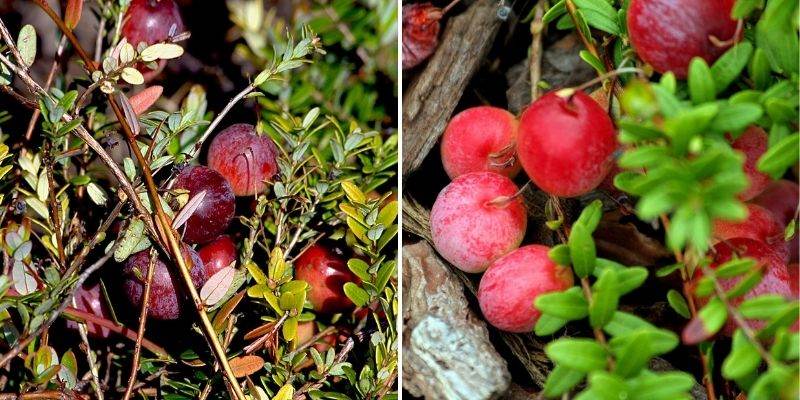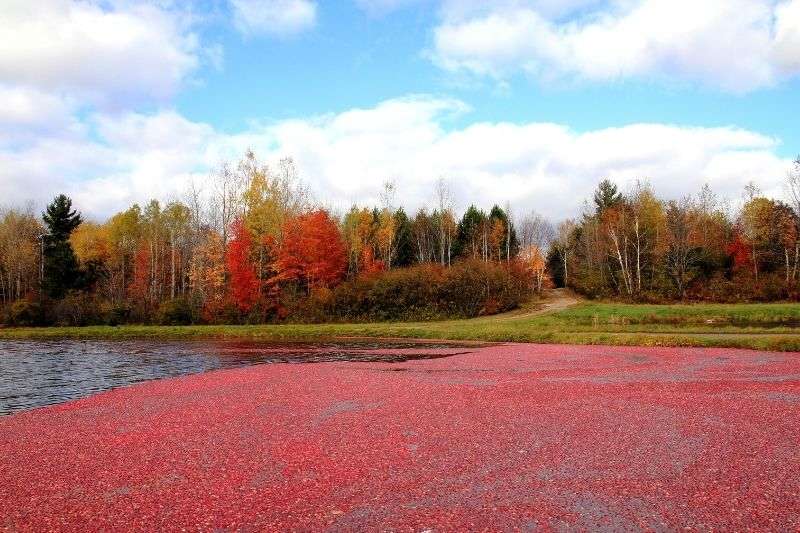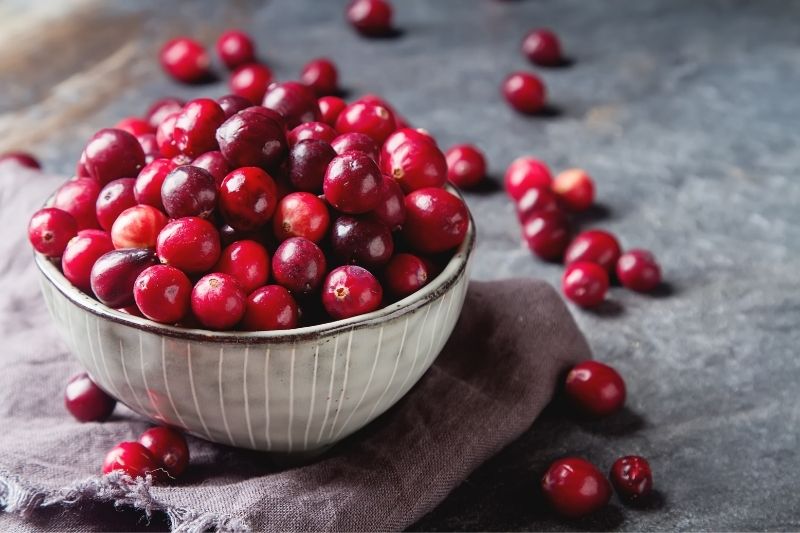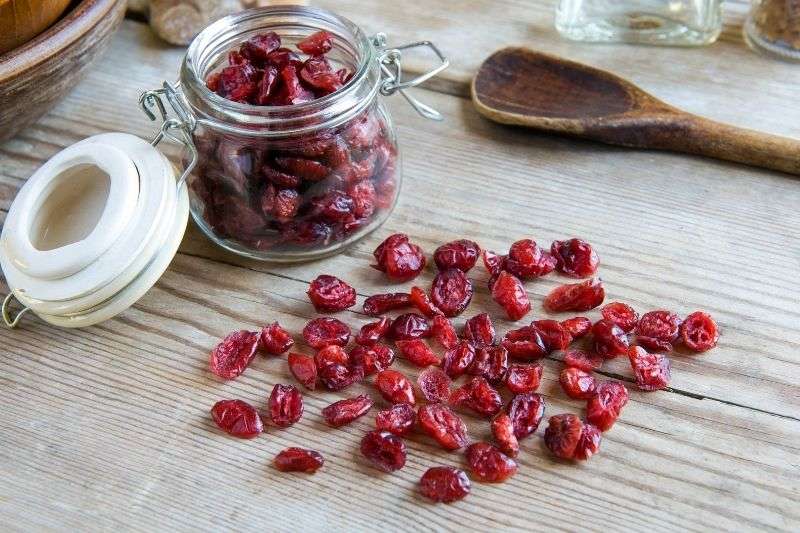The cranberry (translation of "canneberge") is a small, round red berry, 2 cm in size, with a tangy flavour. It comes from a very hardy ground-covering bush, native to North America.
The fruit belongs to the same family as the lingonberry, but the latter grows on a bush of a different species.
Rich in vitamin C, minerals, antioxidants, and a source of fibre, the cranberry is increasingly consumed in Europe for its unique flavour.
Fresh cranberries have a very short shelf life. So to enjoy them all year round, drying is an ideal solution.
Here are 2 methods to easily make dehydrated cranberries at home, along with our tips for storage and culinary uses.
→ Learn more about the cranberry with our complete guide.

Flowers of Vaccinium macrocarpon producing cranberries
The Different Varieties of Cranberries to Dry
The cranberry grows on a bush calledVaccinium macrocarpon, of which there are several varieties:
- ‘Pilgrim’, for example, produces large red berries tinged with yellow;
- the ‘Early Black’ variety offers dark red cranberries, known for their good shelf life.
However, the fruits from Vaccinium vitis idaea are lingonberries.
All varieties of cranberries are suitable for drying. Choose ripe, bright red berries, as fresh as possible and ideally organic. Drying tends to concentrate any chemicals that may be present in fruits from conventional farming.

Vaccinium macrocarpon 'Pilgrim' and 'Early Black' (photos by m.v. - FlickR)
When to Dry Cranberries?
Cranberries are harvested in autumn, between October and November. Early varieties, like ‘Early Black’, can bear fruit as early as September.
Note that this small bush grows quite slowly, and the first harvest usually occurs only after the 4th year of cultivation.
But if you can't harvest the fruits yourself, you can find cranberries in stores, especially during the holiday season.
The cranberry harvest season is hardly compatible with sun drying, which requires dry weather and plenty of heat. This fruit is not traditionally dried naturally in the sun, unlike many others such as tomatoes, apricots, or dates.

Cranberry bogs are large plantations of Vaccinium macrocarpon. These are basins that are flooded during harvest to facilitate picking the floating cranberries.
Preparing Cranberries for Drying
- Before drying, rinse the cranberries in clean water
- Dry the fruits in a clean cloth or paper towel to remove as much water as possible and facilitate drying
- Prick the berries with the tip of a knife or a needle to allow the water inside the fruit to evaporate during dehydration
If you want to mellow the tangy flavour of the cranberries, you can soak them in syrup beforehand. To do this, heat 2 parts water to 1 part sugar. Bring to a boil, then add the cranberries off the heat to avoid cooking them. Strain (you can reuse this syrup) and let the cranberries cool.

Fresh cranberries
Drying Cranberries in the Oven
Most households have an oven, making this the most common method of dehydration. The goal is to gently remove the water from the fruit without cooking it.
You can even use the residual heat from cooking another dish to start drying the cranberries. This way, you’ll use the stored heat and save a bit of energy.
- Preheat your oven to 60°C, or the lowest possible temperature
- Spread the cranberries on a rack lined with parchment paper or a silicone baking mat like Silpat
- Space the fruits apart to allow air circulation and ensure even drying
- During the first hour of drying, open the oven door regularly to let the moisture escape
- Stir the cranberries occasionally with a clean spatula for more uniform drying
Drying time depends on the temperature, oven type, and the natural water content of the fruit. On average, it takes 3 to 8 hours.
Drying Cranberries in a Dehydrator
Dehydrator drying is more energy-efficient than oven drying but requires a dedicated appliance. It allows for low-temperature dehydration, ideal for preserving the benefits of cranberries.
- Arrange the cranberries on the dehydrator trays, spacing them so they don’t touch
- Refer to your appliance’s manual to set the drying temperature (usually up to 40°C) and dehydration time
Drying time varies depending on temperature, dehydrator type, and the fruit’s natural water content.
Storing Homemade Dried Cranberries
Let the berries cool completely before storing them.
Once fully dried, cranberries resemble raisins. They aren’t sticky to the touch, are pliable, and well-shrivelled.
Store dehydrated cranberries in airtight containers: glass jars, metal or plastic boxes.
If condensation forms in the container a few days after drying, return the fruit to the oven or dehydrator.
Keep dried cranberries in a cool, dry place at room temperature, away from moisture and light for optimal storage.
Dried cranberries last about a year.

Using Dried Cranberries in Cooking
Enjoy the benefits of dried cranberries in both savoury and sweet dishes.
Use them:
- in sauces or coulis, as traditionally served during Thanksgiving in the US, alongside meat or mashed vegetables
- in juices or smoothies
- baked into cakes, granola bars, cookies, or other biscuits
- in jams or fruit jellies
- to add a colourful, tangy touch to salads
- as a healthy snack anytime

Smoothie, muffins, and cranberry jam.
































Comments